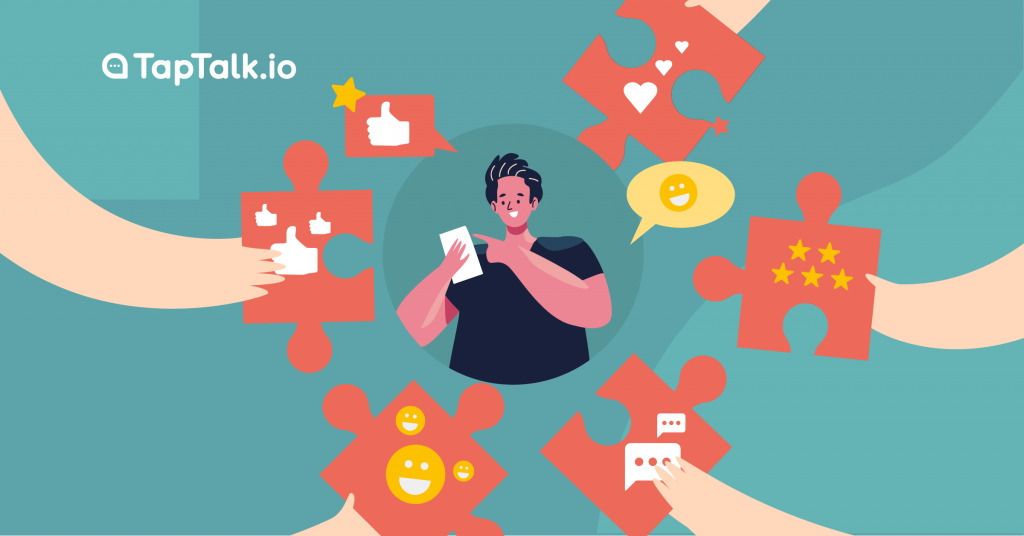
Pada blog sebelumnya, kami sudah pernah membahas mengapa Customer Experience Management (CXM) lebih efektif dibandingkan dengan Customer Relationship Management (CRM). Sekarang, kami akan membahas lebih dalam mengenai CXM dan cara meningkatkannya.
Sebuah penelitian oleh PwC (PricewaterhouseCoopers) pada 2018 menunjukkan bahwa satu dari tiga pelanggan akan meninggalkan brand yang mereka sukai jika hanya mendapatkan perlakuan yang buruk. Pada saat yang sama, 54% responden mengatakan bahwa sangat penting bagi sebuah bisnis untuk meningkatkan layanan konsumen.
Selain itu, menurut penelitian Grup Temkin, 86% dari pelanggan yang menerima pengalaman yang sangat baik, kemungkinan besar akan membeli kembali dari perusahaan itu, dibandingkan dengan hanya 13% dari mereka yang memiliki pengalaman yang sangat buruk. Mereka juga menemukan bahwa mereka yang menerima pengalaman pelanggan yang sangat baik 11 kali lebih mungkin untuk merekomendasikan perusahaan daripada mereka yang memberikan pengalaman yang buruk. Jadi, meskipun layanan pelanggan secara konsisten terbukti penting bagi keberhasilan bisnis, pengembangannya tetap menjadi tantangan utama.
Sebelumnya kita pernah membahas tentang CCM juga. Pada blog ini kita akan lebih membahas transformasi CCM (Customer Care Management) menjadi CXM. Puncak dari transisi CCM ke CXM akan melihat pergeseran dari komunikasi yang konvensional menjadi komunikasi yang berpusat pada pelanggan berdasarkan kebutuhan, preferensi dan kenyamanan mereka.
Teknologi yang ketinggalan zaman merupakan tantangan utama dalam implementasi CXM yang prima dan lancar saat ini. Kontrol kualitas sangat penting, dan untuk menyenangkan pelanggan, agen layanan pelanggan membutuhkan bantuan teknis tercepat dan terbaru.
Memahami pengalaman pelanggan saat ini dan sebelumnya adalah awalan yang baik untuk membangun pengalaman pelanggan yang Anda ingin mereka dapatkan. Tentu saja, proses ini akan mencakup mempelajari perjalanan mereka dengan bisnis Anda, baik secara historis maupun saat ini.
Hal yang bisa Anda perhatikan adalah apa yang mereka suka? Apa yang mereka benci? Inspirasi apa yang dapat Anda ambil dari pengalaman baik dan buruk untuk menciptakan sesuatu yang baru?
Dalam hal ini, Anda dapat menggunakan teknologi seperti Omnichannel. Apa itu Omnichannel? Omnichannel adalah pendekatan terintegrasi untuk proses yang berpusat pada pelanggan di mana beberapa channel digabungkan menjadi satu sistem manajemen untuk meningkatkan kepuasan pelanggan dan experience pada pelanggan. Dapat dikatakan bahwa omnichannel adalah social messaging solution.
Melalui Omnichannel, Anda bisa berinteraksi dengan konsumen lebih mudah dan sesuai dengan keinginannya karena Anda mempunyai catatan sejarah tentangnya. Contohnya Omnichannel yang bisa Anda gunakan adalah OneTalk. OneTalk memiliki fitur yang memunkinkan Anda untuk memahami customer lebih jauh dengan mendapatkan rangkuman sejarah pengalaman mereka saat berbisnis dengan Anda.
Tim lintas fungsi adalah grup yang terdiri dari orang-orang dari berbagai area fungsional perusahaan, dalam hal ini mengenai customer experience (CX), pakar komunikasi, pemasar (marketers), copywriter, dan pemangku kepentingan lainnya yang memvisualisasikan perjalanan pelanggan, memahami di mana pengalaman dan komunikasi gagal serta memiliki kekuatan untuk memperbaikinya. Tim ini berfungsi untuk membantu sebuah bisnis membangun mentalitas yang berpusat pada pelanggan. Semua anggota akan bekerja sama untuk mengetahui kebutuhan klien dari perspektif yang sedikit berbeda, tetapi memiliki tujuan yang sama yaitu customer experience.
Dalam membuat tim, terdapat hal yang harus diperhatikan yaitu tetapkan tujuan dan ruang lingkup setiap anggota, kembangkan proses kolaborasi, bersiaplah untuk kepribadian yang berbeda dari setiap anggota, dan bersabarlah karena hal ini butuh waktu dan proses.
Penting bagi perusahaan Anda untuk selalu memperhatikan pelanggan. Untuk merancang pendekatan CX (customer experience) yang benar-benar berpusat pada pelanggan, Anda perlu tahu bagaimana cara Anda dalam memperlakukan pelanggan saat ini dan rencana Anda selanjutnya. Program CX dapat memberikan wawasan waktu nyata tentang apa yang dialami pelanggan dan bagaimana pengalaman tersebut memengaruhi keterlibatan mereka dengan brand.
Untuk menyampaikan secara konsisten pelayanan yang paling dihargai pelanggan, sangatlah penting untuk mendengarkan secara terus menerus. Meminta- melaporkan-feedback pelanggan dalam real time atau secara langsung di saat tertentu, hal ini akan membantu mengidentifikasi dan memprioritaskan hal-hal yang perlu ditingkatkan untuk mendapatkan customer experience yang baik. Karena pelanggan akan menceritakan kisah mereka, baik positif maupun negatif atau ketika Anda mendengarkan atau tidak.
Setelah itu, ambillah tindakan berdasarkan informasi yang Anda terima dari pelanggan. Jika ada pelanggan yang kurang puas dengan pelayanan Anda, tim Anda perlu menyelesaikan masalah tersebut dengan segera dan hal ini akan menjadi pembelajaran untuk meningkatkan kembali pelayanan Anda.
Gunakan software yang memungkinkan pelanggan Anda untuk memberikan rating. Contohnya dengan menggunakan Omnichannel oleh OneTalk. OneTalk memiliki fitur Customer Rating yang memungkinkan Customer Anda memberikan rating untuk agent Anda sehingga memudahkan Anda untuk mengukur tingkat kepuasan customer Anda.
Selain itu, Anda dapat menelusuri case pelanggan Anda untuk mengetahui bagaimana agent Anda menjawab mereka dan bagaimana permasalahan customer Anda diselesaikan melalui Customer Ongoing Case and History. Hal ini dapat dimanfaatkan untuk mengevaluasi kembali pelayananan yang Anda berikan kepada customer melalui agent Anda.
Jika Anda terus meningkatkan dan memperhatikan pelayanan untuk memberikan pengalaman yang terbaik bagi pelanggan, tentunya pelanggan Anda akan menjadi loyal customer.
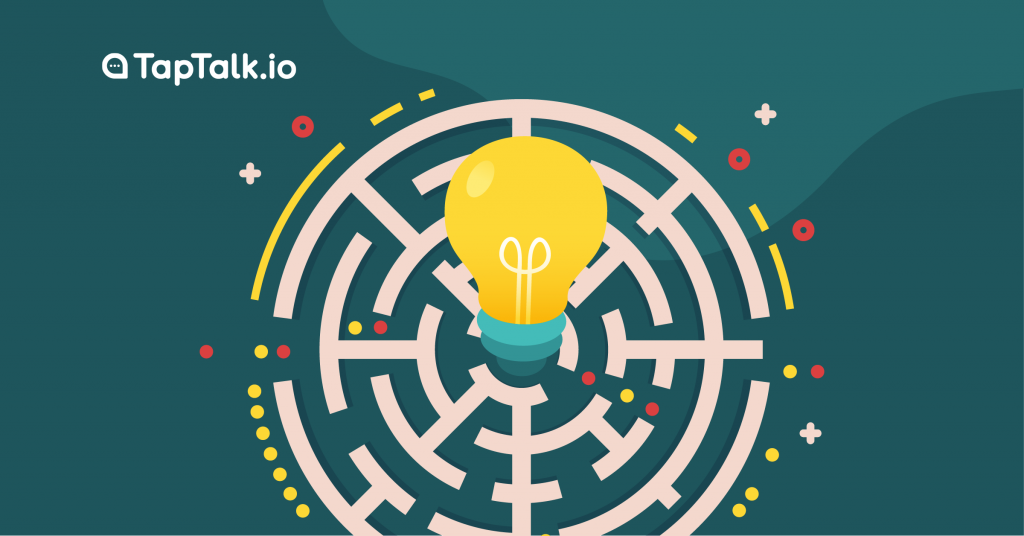
Market turmoil has sparked fears of a recession caused by COVID-19. To gain insight into future paths, business leaders need to pay close attention to market signals across asset classes, but also look outside the market for recession and recovery patterns, as well as the history of epidemics and shocks.
The risk of COVID-19 is considered so aggressive across various asset classes that some people fear a recession in the global economy is an induced consequence. Triggering incidents will rapidly set off a chain reaction in an interlocked global economy.
The effect of this pandemic has caused many businesses to fail, for example: Travel industry, entertainment industry, stores. And, of course, these industries will consult in various chain reactions to other economic aspects of business.
Some organizations are much better than others at managing this level of uncertainty. Even some of them are successful. They find opportunities where others don't and support their organization so they can anticipate fluctuations early and return sooner. These companies enjoy what we call the "uncertainty advantage." With data, processes, commitment, and the right mindset, other people can build these advantages in their organizations too.
Businesses bounce back and strive even better than before, for example: F&B (online promos, ready to cook meals), in-store shops (online shops), and hospitality (staycation promos)
Almost all companies do multivariate models. Nearly all have protocols to reduce risk and anticipate exposure, and nearly all have business continuity plans to provide operational flexibility. However, the reality is that many organizations do not approach these aspects in the right way. They place a lot of emphasis on the short term and rely heavily on familiar patterns to the detriment of counter-intuitive.
As expectations keep changing, the priority for most leaders is to get through the next few months and quarters. Few companies have the courage to consider making a bolder directional correction or looking for a silver line in an economic downturn that could see their business achieve even greater long-term success.
Analysis by BCG found that there are three sources of uncertainty advantages which can construct your advantages in uncertainty. Those are:
To overcome disadvantages, companies just need to become better at detecting signals and more decisive in acting on them, and more proactive in building practices. Crisis shows a tendency for companies to step back. By detecting signals, imagining what the world will be like in 3 to 5 years, and what it will take to win the future, organizations are not in the practice of activating their workforce in dire situations and adjusting performance over the years.
This means you need to adapt to customer’s current behavior and retain customers by serving them better. For this, you can use OneTalk by TapTalk.io as an omnichannel messaging provider to provide them with world class customer service.
OneTalk can help you increase your support with one of other features, Mobile Agent, where your agent can handle customers even from their cell phones because OneTalk provides an app that can be accessed from your phone. The other feature is Broadcast Message and Start New Conversation. Broadcast message feature allows you to send messages to multiple recipients all at once. Your marketing strategy will be more interactive with this feature, sending them multimedia content such as photos, videos, and even pdf files. Meanwhile, Start New Conversation features allow you to do proactive chat and start a new case so your business can reach your customers first. With these and a lot of other features provided by OneTalk, you can easily construct your advantages in uncertainty.
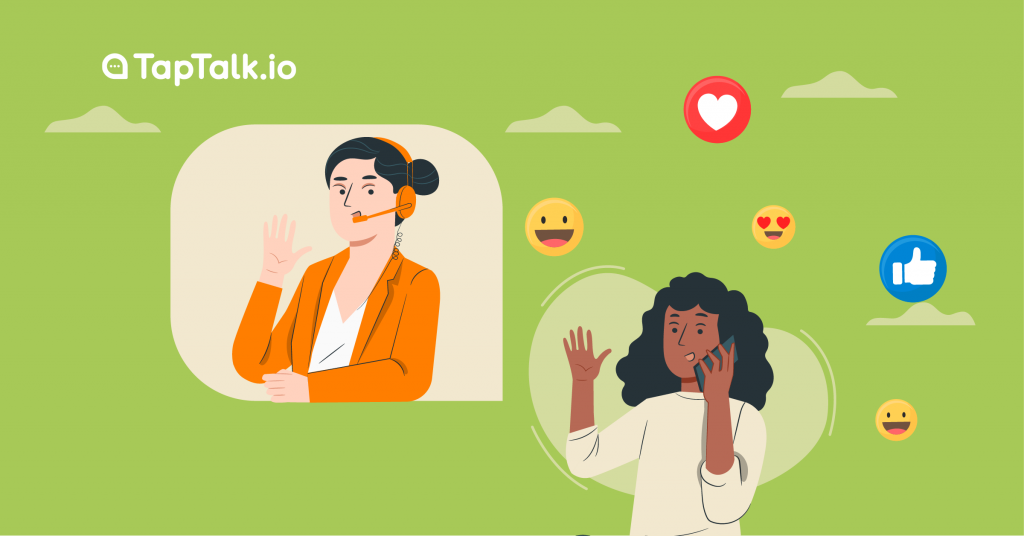
One of the biggest challenges when starting a CX project is that the aspects are so diverse, that few people share the same definition. This guide will help define and uncover some terms and provide some world-class examples of leading organizations.
Customer experience is the integration of the interactions between organizations and their customers throughout the life of their relationship. It is now a major differentiator and growth driver in the customer-facing industry.
Businesses are beginning to prioritize their customer experience. Recent Research by Adone and Econsultancy finds that Business to Business and Business to Customers marketers alike both agree that the most exciting opportunity for 2019 is optimizing the customer experience.
But compared to a few years ago only 10% of the responding company in that research regard themselves as “very advanced”. This proved that not many are aware of the importance of this matter, or even, not successful enough to implement methods to improve their customer experience.
Research by Genesys stated reasons why customer experience is important. The top three being that it improves customer retention (42%), it improves customer satisfaction (33%), and it increases cross-selling and up-selling.
After you have done those steps, now, you need to use other tools to make sure your CX turns well. One of the steps of optimizing your CX is to try to get to know your customer and understand how they react with you. The point of these steps is communication.
Communication is a scarce thing if you want to develop a good relationship with your customers. You need to open your line of communication greatly so your customers always feel that they can turn to you to talk and communicate all the time.
Using omnichannel messaging platform as a messaging solution between you and your customer might be a way to improve your customer experience. Shall we take a look to one of the trusted omnichannel messaging providers?
OneTalk by TapTalk.io has come a long way to broach these areas of customer experience as a part of their service. OneTalk integrates several messaging channels to improve customer satisfaction and customer experience as one social messaging solution. In short, OneTalk helps unify multiple messaging platforms to make it easier for you to respond to customers.
There are several features that support you to improve your customer’s experience. Start New Conversation can help you improve your sales. This feature allows you to reach your customer first and start a new case by practicing proactive chat. You can even Start New Conversation while the case is open and assigned to other agents.
You can also increase your support with one of other features, Mobile Agent, where your agent can handle customers even from their cell phones because OneTalk provides app that can be accessed from your phone. Your agent can access all of your company's messaging platforms, be it WhatsApp, LINE, Telegram, and other platforms through just one channel with the Single Dashboard feature.
And, OneTalk is providing you with WhatsApp Business API services to support your line of communication with one of the biggest messaging platforms in the world.
With all those features, you can improve your sales and support and in turn, increasing your customer’s experience by providing what they need.
Excited for more?
Reach us here and talk to our Agent. We would be delighted to hear back from you!
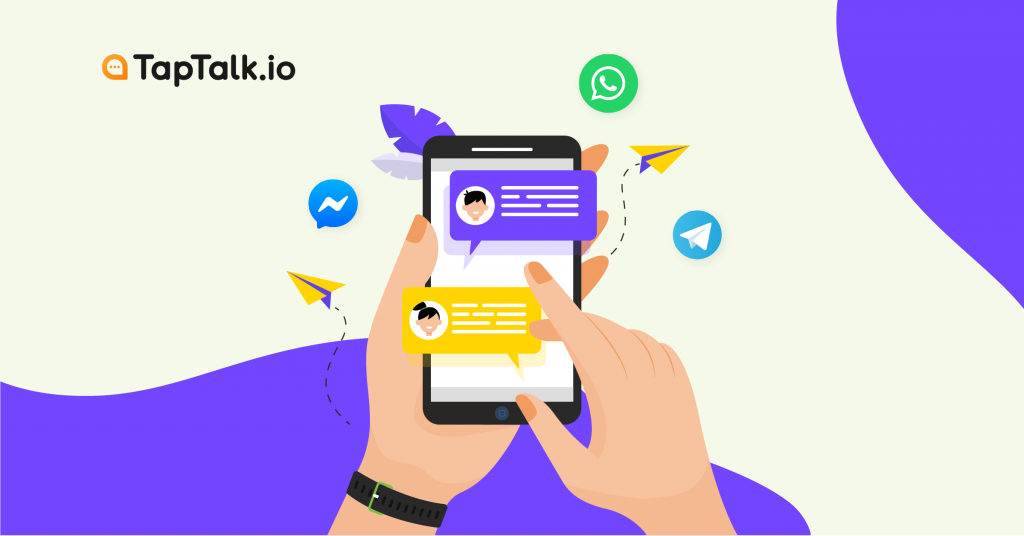
Perusahaan membutuhkan semua keunggulan kompetitif yang bisa mereka peroleh untuk menjadi sukses. Namun, menemukan keunggulan kompetitif melalui produk dan layanan mereka sendiri menjadi sulit atau bahkan tidak mungkin.
Jika Anda mencari cara untuk memberikan pengalaman pelanggan atau customer experience yang sangat baik untuk prospek dan pelanggan, sekarang bukan lagi saatnya anda menelepon.
Chat!
Menelepon membutuhkan waktu lebih milik prospek atau pelanggan anda yang tidak bisa mereka sia-siakan. Membuang-buang waktu sungguh akan membuat pelanggan terganggu dan malah memberikan pengalaman buruk bagi mereka.
Untuk itu, saatnya Anda mulai mengganti strategi customer experience Anda. Menggunakan chat atau pesan untuk memberikan pengalaman pelanggan yang baik, dapat Anda mulai dengan menambahkan saluran percakapan ke dalam perjalanan pelanggan digital Anda, misalnya saja: WhatsApp, SMS, Facebook Messenger, LINE, dll. Dengan demikian, Anda menghindari kemungkinan bahwa pelanggan akan mengabaikan telepon Anda.
Menurut survei We Are Social tahun 2020, terdapat 3,80 milyar orang pengguna aktif media sosial di dunia. Hal ini tentu mengubah kultur penggunaan gawai, dan membuat orang lebih memilih menggunakan fitur chat atau pesan yang terdapat dalam gawai mereka, ketimbang telepon.
Apa saja keuntungan dari optimalisasi chat untuk menciptakan customer experience yang baik?
Sederhananya, pengalaman pelanggan yang mulus ada untuk pelanggan Anda saat ini dan di masa depan ketika mereka menginginkannya dan yang paling penting, di mana mereka menginginkannya. Baik itu panggilan telepon tindak lanjut, respons cepat melalui chat di situs Anda, atau menjawab komentar di media sosial. Anda harus berada di sana saat mereka menunjukkan ‘Saya tertarik dengan produk Anda’.
Hasil dari menciptakan perjalanan digital yang mulus ini cukup luar biasa - pelanggan setia dan pertumbuhan pelanggan yang stabil.
Hal ini dapat dicapai lebih baik dan efektif dengan respons menggunakan chat. Waktu yang dikeluarkan oleh pelanggan dapat lebih efektif, dan tentunya, salah satu kelebihan dengan menggunakan chat untuk menciptakan pengalaman ini adalah mereka dapat melihat balasan atau pesan dari Anda kapanpun mereka bisa dan ingin.
Menjawab kebutuhan pelanggan lewat menanggapi pesan lewat saluran pesan yang mereka pilih dapat dikatakan akan menciptakan CX yang lebih baik. Pelanggan saat ini menggunakan berbagai saluran dan mode komunikasi. Mereka membutuhkan waktu respons yang lebih cepat, interaksi multi-saluran, dan transisi yang lebih lancar antara komunikasi di berbagai platform. Saat ini, pengalaman pelanggan adalah tentang kenyamanan, personalisasi, dan ketepatan waktu.
Hanya karena ada banyak platform, bukan berarti Anda perlu menghubungi setiap pelanggan Anda menggunakan setiap saluran. Itu tidak realistis atau tidak mungkin dan belum lagi, sangat memaksa dari sudut pandang pelanggan. Untuk meningkatkan komunikasi dengan pelanggan dan mendorong loyalitas pelanggan, yang dibutuhkan adalah pemahaman yang lebih baik tentang preferensi komunikasi.
Survei menemukan bahwa 49% orang lebih suka menerima pemberitahuan(notification) daripada pesan teks sementara 53% pelanggan menghubungi brand melalui email untuk manajemen janji temu. Untuk mendapatkan jawaban atas pertanyaan mereka, 45% pelanggan lebih suka berbicara dengan agent dan 37% lebih menyukai menggunakan pesan teks. Untuk jenis interaksi self-service, 48% pelanggan lebih suka menggunakan opsi online chat.
Jadi, preferensi saluran komunikasi pelanggan sering kali ditentukan oleh tujuan interaksi. Solusinya terletak pada penggunaan saluran pelengkap yang berbeda seperti menelepon, mengirim pesan teks, dan email untuk mendorong proses komunikasi yang mulus yang menghadirkan pelanggan dengan berbagai jalur percakapan yang sesuai untuk tujuan tertentu.
Dengan menggunakan chat, Anda dapat menjangkau pelanggan karena dapat menggunakan berbagai saluran yang disukai mereka. Hal ini akan menghasilkan pengalaman pelanggan yang lebih baik lagi dan meningkatkan pengalaman digital pelanggan.
Penggunaan chat juga dapat menguntungkan bagi agent atau perusahaan, karena setiap case atau obrolan akan terekam dan tercatat oleh perusahaan. Ini juga akan mempermudah karyawan Anda jika di kemudian hari membutuhkan data tersebut.
Tips untuk mengoptimalisasi chat sebagai strategi bisnis dapat dilakukan dengan cara-cara berikut ini:
Gunakan nada dan suara yang menunjukkan keaslian dan keinginan Anda untuk membantu.
Tempatkan layanan obrolan langsung di laman situs Anda yang paling masuk akal dan cenderung menghasilkan paling banyak pertanyaan dari pengunjung situs.
Dedikasikan jumlah perhatian yang sama pada detail untuk masalah dan pertanyaan pelanggan Anda seperti yang Anda lakukan jika mereka menghubungi melalui telepon atau email.
Lihat hasil obrolan Anda dari waktu ke waktu untuk melihat bagian mana yang berkinerja terbaik, apa pertanyaan paling umum, dan bagaimana mereka menghasilkan penjualan untuk melihat bagaimana Anda dapat meningkatkan atau mengubah situs web Anda.
Untuk mempraktekkannya, Anda dapat menggunakan omnichannel messaging platform. Anda dapat mencari solusi untuk mengoptimalisasi chat Anda dengan menggunakan salah satu brand omnichannel yang terpercaya, OneTalk by TapTalk.io. Salah satu fitur OneTalk adalah Mobile Agent, di mana agent Anda dapat menangani pelanggan bahkan dari telepon genggam mereka karena OneTalk menyediakan aplikasi yang dapat diakses dari gawai Anda. Agent Anda dapat mengakses seluruh platform perpesanan perusahaan Anda, baik itu WhatsApp, LINE, Telegram, dan platform lainnya melalui satu channel saja dengan fitur Single Dashboard.
Selain itu, mencatat pesan atau case pelanggan tidak perlu dilakukan secara manual, OneTalk akan membantu Anda mencatatnya dengan Fitur Case Detail. Case Detail memungkinkan Anda untuk mengetahui histori pelanggan tersebut dan membantu Anda untuk menanganinya pada kemudian hari. Dengan fitur ini, Anda akan mengetahui berapa lama seorang client telah menunggu balasan atau respon, history case mereka, channel yang mereka gunakan, dan masih banyak lagi.
Ingin mencari tahu lebih dalam? Kunjungi OneTalk dan bicara dengan Agent untuk informasi lebih lanjut.
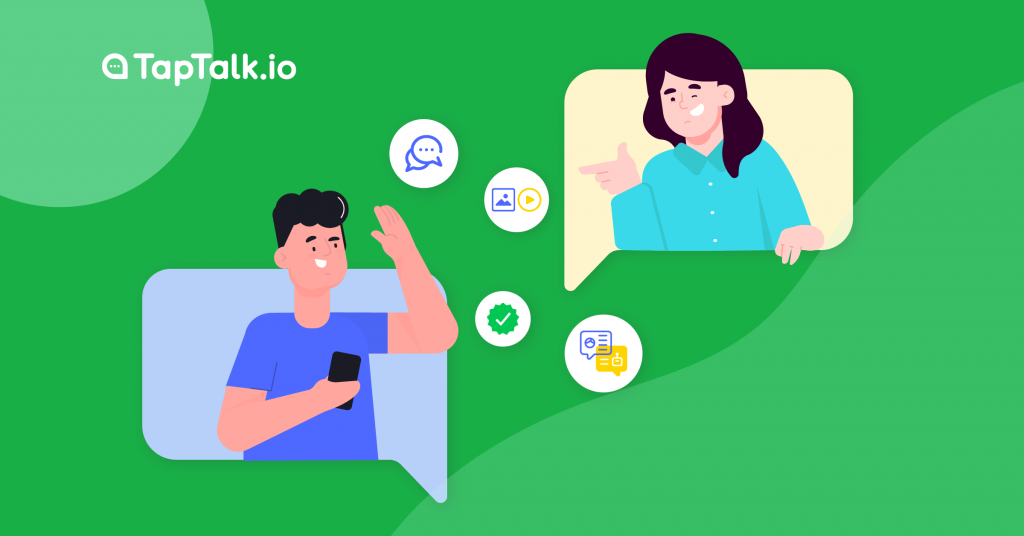
Every business's goal is to sell something to somebody. Whether it is a product, service, or data, for a price, the company has something it offers to its customers. It seems like the point of sales strategies and marketing strategies is the same for that reason, that is to sell the products of services. But by definition, the purposes and methods of sales and marketing strategies are different.
What's the difference between marketing and sales? The difference lies in how close you are to turning a prospective customer into an actual customer.
Marketing includes the methods you use to obtain new leads or prospects into your business. It includes everything that helps increase interest in the goods and services being sold. In order for you to judge which marketing options are cost-effective and deliver results, it should have observable metrics. On the other hand, sales are the process of actually persuading someone to buy your products. It also requires some degree of human contact that convinces a client to become a client. Sales refer to all activities selling goods and services. The person in charge of the sales division has the responsibility of maintaining relationships with prospective clients which ultimately lead to sales. These prospective customers have been guided to you most of the time through marketing efforts.
The marketing strategy's purpose is not to make sales. Instead, it's about meeting prospective consumers and raising their awareness of the goods, services, and company, and the opportunities for them all. Marketing practices are structured to help, but not inherently make sales. This is because not every visitor to your website or company is a good match for your product/service in your target market.
The goal of any sales strategy is fairly simple: to make sales. Although it is a goal, it is so much more complex than that. Sales teams are tasked with maintaining partnerships and leading them to a buying choice with future buyers. A sales strategy can also discuss techniques to transform one-time consumers into return buyers or sources of recommendation.
For example, a marketing strategy is something that applies behind the curtain. Their team does not meet with a customer face to face. You wouldn’t meet with a marketing officer when you visit a store. But, a sales strategy is something that a customer can see. When you go to a store, you will meet some sales promotion girls (SPG) or others. Those SPG are the implementation of a sales strategy.
The marketing strategy generally involves:
The sales strategy generally involves:
Generally, the marketing strategy is set by the CMO (Chief Marketing Officer) or VP of marketing, but it is guided by multiple marketing team members. This is because the marketing team interacts directly with groups, such as product, product marketing, service, and sales, that influence customer.
On the other hand, the sales strategy is set by the VP of sales or the chief revenue officer. Sales executives and new company owners then introduce it. Salespeople typically work on a segment instead of engaging with the whole group that marketing targets. So the sales staff will talk directly to customers or communicate at a time with a few qualified leads.
Both strategies equally have a different person in charge. It's just a different position’s name.
Marketing strategy is a long-term, forward-looking vision and an overarching game plan of any company or business with the underlying aim of recognizing the desires and wishes of consumers to achieve a sustainable strategic edge.
Usually, a sales strategy is short-term. A sales strategy is usually designed later and it draws on the marketing strategy. Depending on if the sales staff is meeting or exceeding sales expectations, you may need to make occasional improvements to this technique.
The scope of work and its duration can also illustrate the difference in sales and marketing. Sales team jobs tend to be short term while marketing teams tend to be more long term.
This is because the marketing team must maintain harmonious relationships with business partners and vendors related to product marketing. Constant contact is required for an effective marketing strategy. Everyone on the team wants to realize how the brand campaign will better meet broader business goals. As well as using instruments such as market models, demographic studies, and competition analysis, the emphasis should also be on promoting brand promise to consumers.
The scope of marketing work also includes market research, public relations, and customer satisfaction. Meanwhile, the scope of the sales team's job is to convince (potential) customers to continue to feel the need for the products you sell.
A good sales strategy draws on the marketing team's efforts by securing individual customers who are most likely to purchase. This is typically so unless a large portion of their prospects is guided by the sales staff. Direct sales departments are busy pursuing prospects, making calls for exploration, qualifying candidates, product or service pitching, developing partnerships, and turning prospects to clients.
The difference in sales and marketing can also be seen from the priorities and work functions of these two divisions.
In terms of work priorities, the difference between these two positions lies in the activity targets. The marketing team's priority is to reach customers and build good relationships with customers so that they can become loyal customers. You can imagine a clear advantage if several large companies become regular customers of the products that your company has.
The more regular customers, the bigger the profit, of course.
Apart from that, these regular customers will be there if the service and response from the sales team also support the quality of the products and customers that have been reached.
The function of the sales team is to accommodate and target customers while helping them meet their needs with the products offered. The difference in sales and marketing in their functions and priorities is precisely what makes them synergize with each other.
| Pros | Cons |
| Promotes Your Business to a Target Audience (You have a better chance of receiving the perfect customer because you know your target) | Hard to Generate a Momentum(For a small business creating momentum may be hard because your brand is still small and not many people know about you yet) |
| Helps You Understand Your Customers(After knowing your targeted customers, you can understand them better) | Cost(Big companies can afford to waste time and money focusing on a marketing strategy that struggles because they can regroup and move on. As a small business owner, though the return on spending on a marketing campaign might be poor, and that means you have spent months to cover that) |
| Helps Brand Your Business(Your marketing strategy isn’t just about boosting leads and converting them into buyers, it’s also about expressing the culture, values, and purpose of your business. By doing a marketing strategy you also help introducing your brand to others) |
| Pro | Cons |
| Strengthens Customer Engagement and Commitment(Salesperson usually interact with their customers and they can ultimately build a stronger connection with customers) | May Lower Brand Awareness(The overuse of some discount discounts can lead consumers to assume that the cheaper price is the normal price, which may cause them not to believe that the quality of the goods correlates with goods from comparable rivals offering less frequent or no price reductions) |
| Quick to Develop(Compared to other types of strategy, some sales strategies can be quickly created and made available within a market) | Distributors Won’t Be Prepared(Some consumer sales strategy require the assistance of distributors (e.g. retailers), but not all distributors can support the sales strategy, particularly if the promotion requires the distributor to do additional work) |
| Help Sells More of Your Product(In cases where stock replacement is needed (e.g. items approaching expiration date; clearing inventory to make way for new models), sales strategy may be used to easily decrease supply.) |
From recognition to purchase, both marketing and sales are integral aspects of the consumer journey. Your business teams need to align with these two strategies, and that means recognizing all points of convergence and divergence. According to Aberdeen Group, sales and marketing alignment can lead to a 32% increase in year-over-year revenue growth.
Communication between your sales and marketing departments is vital to aligning your sales and marketing activities. This means that sales have feedback on the types of marketing material that would be effective, that shared priorities are defined, and that everybody uses the same language and knows the vocabulary of each other.
Sales and marketing roles intersect, even though they are often grouped independently. Enterprises that recognize critical overlap areas may gain more value from their teams by pooling efforts. After all, both sales and marketing share the same objective: to increase sales.
Awareness. An initiative to raise awareness about a product or service is the first step in the sales process. Efficient awareness-building efforts may help a prospect to remember a brand or product name or may guarantee that an organization makes a shortlist for purchase consideration.
Engagement. Engagement efforts draw on an initial marketing strategy to strengthen the relationship of the customer to a brand or product. Marketing resources for interaction can be longer (e.g. whitepaper or video) relative to a more simplistic awareness item (e.g. direct mailer or radio advertisement).
Conversion. Conversion is the vital transformation of a new client from an unknown figure to a recognised leader. In the case of marketing departments, a conversion may be the completion of an online form, the instigation of a webchat, or a phone call to a customer service line.
Retention. And after a buy, a marketing team may help a company develop its repeat customers. Maintaining a marketing role tends to sustain visibility and commitment during sales. This can include email newsletters or webinar invites that help consumers get more value from a product. In particular, the retention role of marketing is important for subscription services.
Follow up. The main sales feature is to follow up on the lead created by the marketing department. Successful enterprises typically create a formal hand-off mechanism such that each marketing-qualified leader receives accurate and prompt follow-up from a sales team member.
Relationship building. The "hard sell" era begins to disappear. Modern sales rely on developing relationships to help establish loyalty between the customer and the seller. Effective salesmen should consider the interests of the purchaser to create a persuasive—but not a persuasive—message to better distinguish the commodity of the business.
Closing. Often salespeople are judged by their willingness to transform leads into buyers. While some may envisage a face-to-face meeting and a handshake as the end of a sale, many companies are now closing deals online or over the phone. This could increase the responsibility for closing the sale to more workers.
Retention. Sales and marketing are responsible for improving customer satisfaction. When checking in with a current customer, a sales staff member may further show an engagement in the future of a long-term customer, not just a one-time deal. Continued efforts to develop good partnerships will help boost satisfaction and contribute to "upselling"—additional purchases outside initial purchasing.
How do the sales and marketing departments accomplish their objectives? Tactics differ depending on the culture of the market and the business. They've improved over time, too.
These are some of the traditional sales and marketing strategies that are at the heart of each practice.
Outbound marketing. Marketing Outbound. Outbound marketing stands for conventional "push" marketing. This covers tv ads, direct mail posters, and cold calls. Outbound marketing strategies are also successful in creating strong demographic recognition. However, some new marketing tactics challenge the capacity of outbound marketing to create compelling, personal marketing messages that establish long-lasting business-customer relationships.
Inbound marketing. Inbound marketing is shifting marketing efforts from "drive" to "pull." The key concept behind inbound marketing is to attract new buyers by designing marketing materials that support users. For example, an investment company can deliver a free retirement planning webinar. Inbound marketing aims to rely first on offering something useful to the customer, rather than having an inward focus on presenting a business message.
Limiting the opportunity. The notion of a "limited-time bid" is popular in retail, but generating a feeling of scarcity is a strategy used in many industries. A limited opportunity can be limited by time (e.g. a decent deal for this month only) or availability (e.g. the last pickup on the lot).
Focusing on pain points. A successful salesperson can determine the benefits of a product or service concerning the needs of a customer. This involves recognizing the day-to-day problems that the customer faces and reflecting on how the product can address these issues. Focus on pain points may often help to develop a friendship by expressing a salesperson's concern about the customer's issue.
Making the assumptive close. The assumptive close is a sales tactic that transforms the "yes" order into a "no." For example, instead of saying, "Do you want to try this service?" a salesperson might ask, "When would you want us to arrange the installation?"
While having the same end goal, marketing and sales strategy are two different things. Marketing advises and draws leads and prospects to your brand, product or service. Sales, on the other hand, deals exclusively with prospects to enhance the appeal of the company's solution to turn prospects into consumers.
There is a lot of pro and cons of both strategies which should take your attention because they will affect the revenue of your businesses.
If your small business is having trouble balancing the marketing and sales strategy, you could always use tools and other solutions. You don’t even need to differentiate between them, you can simply use an omnichannel messaging platform. Using a trusted omnichannel messaging platform will helps you balance it. OneTalk by Taptalk.io as an omnichannel messaging solution can increase your sales, marketing, and support.
OneTalk can help you execute the constant contact that you require to balance marketing and sales strategy. With our ability to integrate multiple messaging platforms, OneTalk has all the features to enhance your business. One of them is Broadcast Message and Start New Conversation. The Broadcast Message feature allows you to send messages to multiple recipients all at once. Your marketing/sales strategy will be more interactive with this feature, sending them multimedia content such as photos, videos, and even pdf files. Meanwhile, Start New Conversation features allow you to do proactive chat and start a new case so your business can reach your customers first. With these and a lot of other features provided by OneTalk, you can easily balance your marketing and sales strategy.
In this pandemic situation, OneTalk, which integrates messenger platforms in one dashboard, can maintain your communication with your employees because you will be able to continuously monitor their work through the Real-Time Agent Activity Tracker feature. This feature will allow you to see in real-time the cases that are being handled by your employees.
Also, OneTalk creates an effective work system in the aspect of corporate communication with customers. With Assignment Rules which have assignment systems for different customers, you can easily share cases with your agents. The Topics feature also allows you or your employees to sort out the topics discussed by the customer so that they can easily categorize them.
Oh wow! Just how much are the features on OneTalk? Well, it seems like a lot, but there are more to be found. You can even utilize the right platform! Other than giving you privileges of integrating multiple messaging platforms, OneTalk also provides you with WhatsApp Business API services to support your line of communication with one of the biggest messaging platforms in the world. Use this to apply your Marketing Strategy and Sales Strategy and increase your sales like never before.
Want to know more, contact our agent to explore all the features we provide for you.
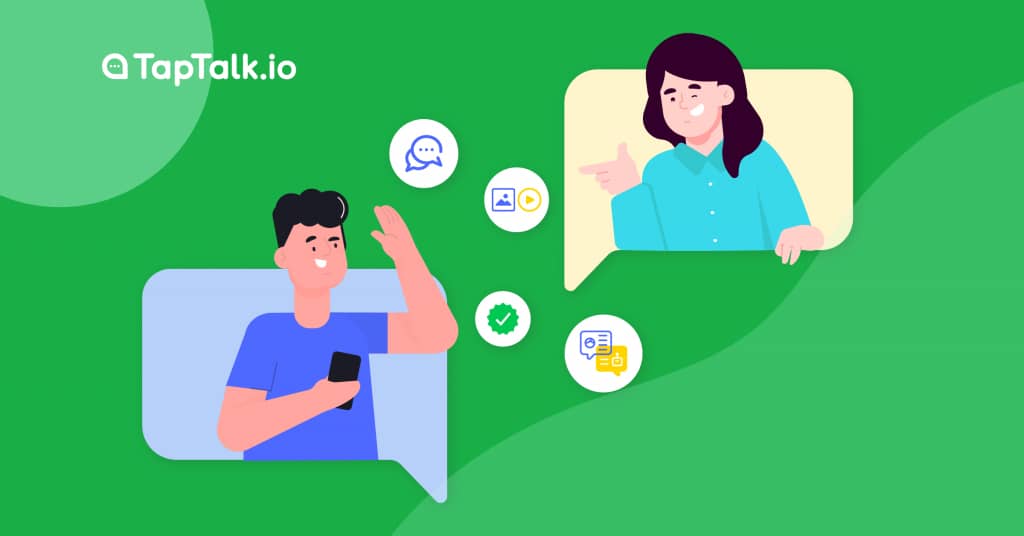
Ketika kita mendengar “pemasaran lewat media sosial”, platform sosial seperti Facebook dan Twitter langsung muncul di benak Anda. Namun, aplikasi messenger seperti WhatsApp telah mengikuti jejaring sosial utama dalam hal basis pengguna, dan itulah mengapa Anda memerlukan strategi pemasaran WhatsApp.
Pada Januari 2018, WhatsApp meluncurkan Aplikasi Bisnis WhatsApp yang sangat dinanti-nantikan ke pasar terbatas. Sejak itu, minat telah berkembang pesat karena bisnis dari semua ukuran mempertimbangkan nilai penjualan WhatsApp khusus atau saluran layanan pelanggan.
WhatsApp, dengan sekitar 2 miliar pengguna aktif bulanan yang tersebar di 180 negara, sekarang menjadi aplikasi perpesanan seluler paling populer di seluruh dunia, mengungguli Facebook Messenger dan raksasa sosial lainnya. Dengan basis pengguna yang begitu luas dan ketersediaan di lebih dari 50 bahasa, WhatsApp adalah platform yang menjanjikan bagi pemasar untuk menjangkau audiens yang menarik.
baca juga: 3 Cara efektif meningkatkan penjualan melalui WhatsApp
Banyak organisasi jasa keuangan telah memahami keefektifan WhatsApp dalam pengoperasiannya. Perusahaan juga memahami pentingnya pengarsipan pesan tersebut agar sesuai dengan berbagai persyaratan peraturan yang menjadi pokok bahasannya.
Karena popularitas WhatsApp, banyak orang menggunakan versi berbeda dari aplikasi untuk berbagai keperluan. WhatsApp standar biasanya digunakan untuk keperluan pribadi, sedangkan WhatsApp Business dan WhatsApp Business API dapat digunakan untuk operasi resmi perusahaan.
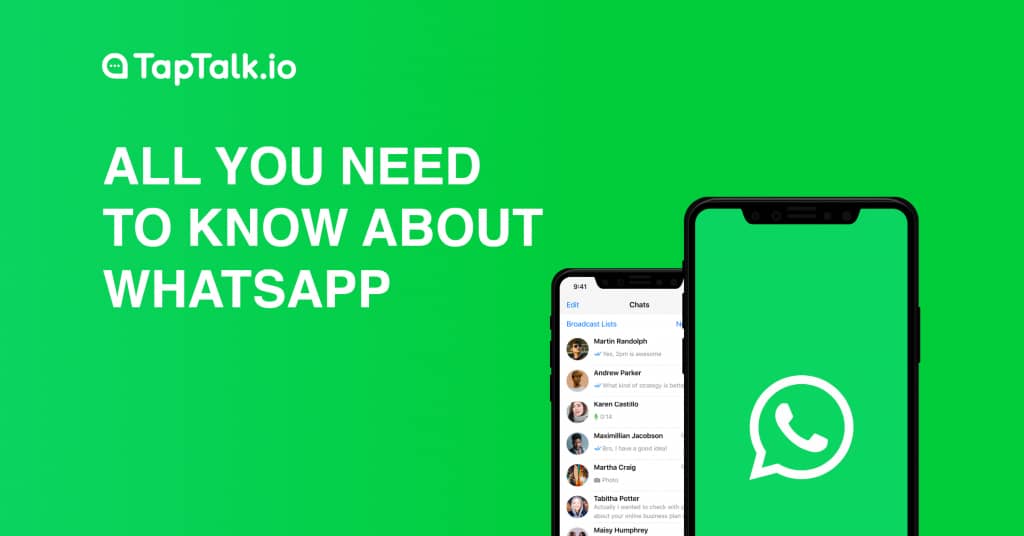
WhatsApp Business dirilis pada 2018 dan dirancang khusus untuk bisnis kecil agar orang-orang dapat menggunakan dua akun di telepon yang sama tanpa harus menggunakan akun WhatsApp standar lainnya. Karyawan dapat dengan mudah mengidentifikasi aplikasi mana yang untuk penggunaan pribadi mereka dan mana yang untuk tujuan bisnis karena WhatsApp Business memiliki logo yang berbeda.
WhatsApp Business juga dilengkapi dengan fitur "Quick Reply", yang memungkinkan orang mengirim balasan yang telah ditentukan sebelumnya terkait pertanyaan yang sering diajukan. Selain "Quick Reply", WhatsApp Business juga hadir dengan kemampuan untuk mengirim pesan salam dan pesan pergi, untuk melabeli percakapan, dan fitur lainnya.
Baca juga: Cara Jualan melalui WhatsApp Business
Banyak perusahaan tertarik untuk menggunakan WhatsApp Business karena memungkinkan mereka untuk mengirim pesan langsung ke perangkat klien mereka, secara profesional dan gratis, selama mereka memiliki koneksi internet.
WhatsApp Business dirancang untuk bisnis kecil, tetapi WhatsApp Business API secara khusus dibuat untuk perusahaan besar. WhatsApp Business API memberdayakan komunikasi perusahaan dengan pelanggan di seluruh dunia, memungkinkannya terhubung dengan kliennya di seluruh dunia. Hal ini dipengaruhi fakta bahwa pelanggan ingin terhubung dengan bisnis di platform yang sudah dikenal, cepat dan andal.
Menggunakan WhatsApp Business API untuk perpesanan bisnis Anda membuka pintu untuk komunikasi yang lebih baik - mengarah ke keterlibatan pelanggan yang lebih baik, peningkatan kepercayaan, dan hubungan pelanggan jangka panjang.
WhatsApp Business API dirancang untuk perusahaan besar yang menerima pesan dalam jumlah besar, yang tidak lagi dapat ditangani oleh WhatsApp Business. Aplikasi WhatsApp Business hanya dapat digunakan di satu perangkat oleh satu pengguna, yang sangat membatasi untuk perusahaan yang lebih terkemuka. Aplikasi bisnis standar juga dibatasi dalam hal otomatisasi.
Mengembangkan dan memprogram Business API memungkinkan perusahaan untuk menghubungkan API dengan WhatsApp Business Solution atau CRM WhatsApp mereka. Tidak seperti aplikasinya, API juga dapat mendukung pengguna dan perangkat dalam jumlah yang tidak terbatas. Perusahaan juga dapat menggunakan API untuk mengirim pemberitahuan ke klien mereka. Namun, perhatikan bahwa untuk API, membuat akun terlebih dahulu memerlukan persetujuan, pesan harus ditanggapi dalam waktu 24 jam, dan Pesan Template memerlukan persetujuan sebelumnya dari WhatsApp sebelum dikirim. Namun, WhatsApp Business API mampu menjangkau klien dari seluruh dunia.
WhatsApp Business API lebih kuat daripada aplikasi bisnis standar dan lebih berguna bagi perusahaan yang lebih terkemuka daripada yang terakhir.
Salah satu keunggulan WhatsApp Business API adalah akun Anda akan terverifikasi atau mendapat green thick badge. Hal ini akan membuat akun Anda, atau akun perusahaan Anda menjadi lebih kredibel di mata pelanggan.
WhatsApp Business API menyediakan automation yang mendukung chatbot. Chatbot memungkinkan Anda untuk dapat merespon pesan dari pelanggan Anda setiap saat. 80% percakapan dapat diotomatiskan dan layanan pelanggan hanya melakukan pekerjaan yang penting bagi manusia. Sehingga, Anda dapat memfokuskan sumber daya customer service Anda kepada masalah yang lebih kompleks.
Notifikasi ini akan menjamin reach dari pesan kamu kepada customer, karena dapat menjangkau mereka, bahkan dari lock screen mereka.
Menjawab pesan dan pertanyaan pelanggan, hingga memberikan pemberitahuan dapat dengan mudah dilakukan dengan menggunakan konten multimedia. WhatsApp Business API memungkinkan Anda untuk menjawab dengan mudah menggunakan konten multimedia. Anda dapat menjawab pesan pelanggan menggunakan medium yang lebih visual, seperti foto, video, atau bahkan file PDF.
Fitur selanjutnya yang bisa dirasakan yang dimiliki WhatsApp Business API adalah fitur penggunaan telepon perusahaan selain nomor seluler sehingga akan membuat akun WhatsApp Business perusahaan terlihat lebih profesional. Dengan menggunakan nomor dan profil perusahaan secara lebih jelas, pelanggan dapat lebih percaya dengan akun WhatsApp Business perusahaan.
Penggunaan WhatsApp Business API memang membutuhkan serangkaian proses untuk pendaftarannya yang dapat memakan waktu. Tetapi, solusi lain yang dapat digunakan adalah menggunakan jasa omnichannel messaging platform untuk mendapatkan akun tersebut.
Salah satu penyedia jasa omnichannel adalah OneTalk by TapTalk.io. OneTalk melihat potensi besar yang dimiliki aplikasi bisnis WhatsApp untuk menghubungkan bisnis dengan pelanggan mereka, dan itulah mengapa kami menjadi salah satu integrator pertama dari solusi tersebut.
Sejak pengembangan awal, kami telah berkembang untuk memahami cara mengoptimalkan API untuk memberikan manfaat maksimal bagi pelanggan baik dalam hal mengamankan penjualan baru dan membina hubungan yang baik dengan pelanggan. OneTalk menyediakan WhatsApp Business API dan memungkinkan Anda untuk mengelola data dalam percakapan Anda. Anda dapat dengan mudah mengekspor data Anda dan mengelompokkan chat yang masuk sesuai topik masing-masing.
Ingin melakukan integrasi WhatsApp Business API sendiri? Silahkan baca tutorial Integrasi WhatsApp Business API
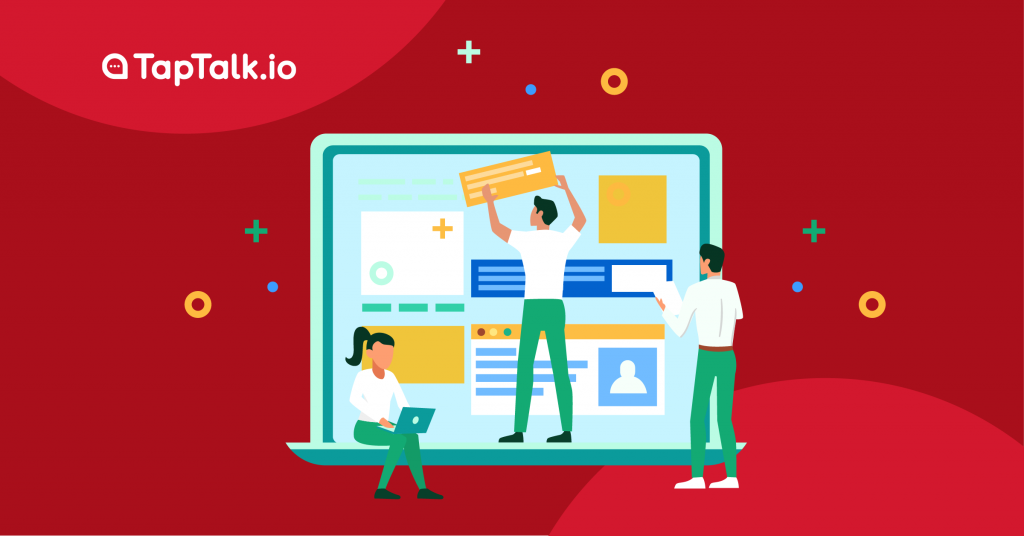
Design is not easy to expand. Design is a system that requires driving elements. It will be just an “empty entity” that must be filled by “something” so its existence is recognized. It has become a huge part of companies to make them stronger and successful in this competitive digital market.
Improving design through work, without setting standards, is a myth. With each new promise, new ideas for color palettes, typography, and patterns emerge in the product, increasing diversity and increasing maintenance costs. Each new employee increases design entropy. There is only one way to stop the growth of this chaos. A commitment to run a design system.
A design system can help by scaling. Design can scale, but it can only scale with design system.
The design system is now very popular. Why? Because it is effective like everyone says it will be. Applying a design system to your business will bring a lot of benefits:
10 Steps to build design system
1. Evaluates current UI inventory and note differences
To start a good design system, it is best if you evaluate what you already have. In this aspect, consider which element will be the best, and which part do you want to replace? Try to find differences and inconsistencies between your products or pages.
A few elements that you need to pay attention are color schemes, how every color is used, Stylistic text choices, photo libraries, icon libraries, UI patterns, page templates, and other graphics.
2. Prepare your team to be onboard
You need a team to implement and manage a design system throughout the product design cycle. For most design systems, teams need front-end designers and developers. Start by identifying the skills you need and then identifying the people who have them.
3. Establish principles and rules for the design system
The design system is a system of values shared throughout the design system. This includes the techniques - CSS in Javascript or something else - that you will use to write your design scheme; How will you distribute the design system; And if you're going to use one of your digital products as a starting point for the system.
4. Color palletes
Color is an important aspect because it can impact all of your work. Decide on the hue and color for each of the colors you use most often, and write down final instructions on how to use them. Of course, this includes your primary brand colors, but also pay attention to your secondary colors. For example, what color is your text? Your link? Special keys? Background?
Be as detailed as possible when writing your code. Check out your own design style to fix any problems you might encounter while testing the color palette in the product UI.
5. Typographic elements
Now, you would want to review and finalize your typographic choices. Design systems can be more technical than static pattern guides, so take advantage of that. Note your preferred text size, spacing, font, etc., as well as any rules about where and when to use it. For example, how big is the section title in your blog post? What fonts do you use for an on-site call-to-action?
Don't ignore subtle details, like line height, font weight, or custom kerning rules.
6. Graphic design assets
The well-designed design system allows you to directly drag and drop visual components into your new prototype. The more graphic design assets you collect in your design system, the faster you can progress your work for future projects.
Don't forget to include any appropriate code snippets or documentation that the developer might need. These small aspects will be useful during the development stage.
Within all your graphic design assets, you will need libraries to implement: icons libraries, photography libraries, illustrations, and branding images.
7. Standardize Other Style Properties
Design decisions also include complementing grid patterns and other characteristics not covered in the previous section, such as spacing. As with the other components of your design system, here, standardization also aims to remove inconsistencies.
8. Build the First Design System Pattern
Don’t focus on building all the patterns in one go, because building design system pattern can be an iterative process. Build it one by one by identifying the best architecture for your pattern library.
9. Run a Sprint Retrospective
Sprints can be a great way to ensure fast learning across teams. All product teams should set up regular retrospective sprints to analyze progress and make necessary improvements.
10. Conclusion
All of the steps mentioned here will provide you with a set of design guidelines that promote a consistent design language. Don't think of a design system as a project. Instead, treat it as an ongoing process that requires rapid iteration.
Selama pandemi COVID-19 (corona virus), aktivitas sehari-hari kita menjadi lebih terbatas. Sebagian dari kita mungkin akan lebih memilih berada di dalam rumah saja dan sisanya akan menjalankan aktivitasnya di era #NewNormal sesuai dengan protokol kesehatan. Meskipun kita sedang melalui sebuah masa yang belum pernah terjadi sebelumnya, kita bisa memanfaatkan peluang yang ada. Misalnya adalah meningkatkan customer engagement. Banyak bank yang memanfaatkan momen ini untuk mempercepat transformasi digital keterlibatan nasabah mereka. Mereka menggunakan web, mobile app, atau chat messenger app sebagai marketing dan sales tools untuk berkomunikasi.
Perbankan selalu menjadi sektor yang berfokus pada pelanggan. Etos sentimen ini didorong lebih jauh oleh banyaknya transaksi yang sekarang terjadi di internet. Selain itu, kepercayaan merupakan aspek terpenting dalam dunia perbankan. Sangat penting untuk membangun kepercayaan dengan mengutamakan aktivitas keterlibatan pelanggan.
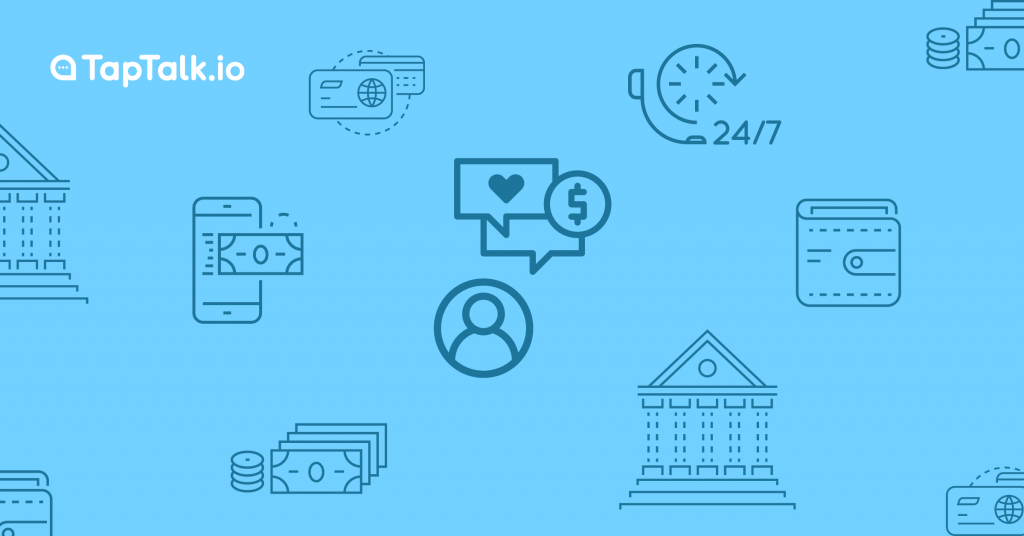
Berikut adalah beberapa manfaat nyata dari customer engagement strategy yang terencana dengan baik:
Pelanggan yang terlibat secara aktif terbuka untuk menjajaki peluang investasi dan produk keuangan lain di dalam bank. Hal ini akan membantu meningkatkan pendapatan bank.
Sudah menjadi praktik umum bagi setiap individu untuk memiliki banyak rekening di bank yang berbeda. Jika Anda berhasil melibatkan pelanggan sepenuhnya dengan jenis aktivitas keterlibatan pelanggan yang tepat, bank Anda menjadi bank utama untuk semua kebutuhan perbankan pelanggan Anda.
Proses keterlibatan pelanggan yang solid akan membantu pelanggan Anda memahami bahwa bank Anda mampu menangani semua kebutuhan keuangan mereka. Mereka tidak harus mengkhawatirkan pilihan yang berbeda untuk kebutuhan keuangan yang berbeda.
Jika pelanggan Anda sangat puas dengan layanan yang Anda berikan, mereka akan dengan sendirinya menjadi brand ambassador. Artinya, mereka secara tidak langsung memperkenalkan bank Anda kepada teman dan keluarganya dengan cara menceritakan pengalaman baik mereka dalam menggunakan bank Anda.
Perbankan menjadi lebih mudah dengan teknologi dan layanan baru. Hal ini mengubah cara kita berpikir tentang perbankan, uang kita dan aplikasi serta kemampuan teknologi. Transformasi digital semakin diakui sebagai prioritas oleh industri perbankan ritel, tetapi masih banyak bank yang masih belum mengaitkan digitalisasi dan penghematan biaya.
Customer mendambakan pengalaman yang sederhana dan langsung. Artinya, perusahaan harus siap, tanggap, dan sudah mengantisipasi pertanyaan atau masalah apa yang mungkin dimiliki pelanggan - terdengar jelas tetapi itu adalah sesuatu yang tidak dilakukan dengan baik oleh bank saat ini. Pelanggan harus merasa bahwa bank mereka tidak hanya mudah dihubungi, tetapi merupakan mitra bagi mereka dan ada untuk mengulurkan 'uluran tangan'.
Konsumen terlibat dengan bank mereka dengan cara mengunjungi kantor cabang, situs web, menggunakan mobile app, menelepon customer service, dan berhubungan melalui obrolan/email. Pada saat pandemi ini, tentunya tidak mungkin bagi nasabah untuk mengunjungi langsung kantor cabang terdekat. Mereka akan mencari cara lain untuk menghindari tempat yang ramai atau mengurangi kontak/interaksi langsung. Sehingga memberikan layanan terbaik di seluruh saluran channel online menjadi jawabannya.
Umumnya di setiap website bank, terdapat kolom contact us untuk berhubungan langsung dengan customer service perbankan. Nasabah dapat menghubungi dengan cara menelepon, mengirim pesan melalui WhatsApp atau sms, serta mengirim e-mail. Tentunya setiap bank menggunakan nama atau channel yang kredibel. Misalnya alamat email yang menggunakan nama bank (customerservice@bank.com) bukan menggunakan host email yang sering digunakan banyak orang (seperti @gmail, @yahoo, dan lainnya). Bank juga bisa menggunakan WhatsApp verified atau centang hijau. Tanda ini menunjukkan bahwa WhatsApp tersebut merupakan channel resmi dari bank.
Untuk mempermudah berkomunikasi dengan nasabah, bank dapat menggunakan layanan omnichannel. Omnichannel adalah pendekatan terintegrasi untuk proses yang berpusat pada pelanggan di mana beberapa channel digabungkan menjadi satu sistem manajemen untuk meningkatkan kepuasan pelanggan dan pengalaman customer. Dapat dikatakan bahwa omnichannel adalah social messaging solution.
Salah satu produk omnichannel yang bisa bank atau Anda yang ingin memiliki usaha gunakan adalah OneTalk. OneTalk merupakan produk Omnichannel Customer Engagement dari TapTalk.io yang bertujuan meningkatkan efisiensi dan kualitas hubungan dengan nasabah/customer.
Messanging channel yang didukung OneTalk.io adalah WhatsApp, Telegram, Facebook Messenger, Twitter DM, LINE, Instagram, Email, dan lainnya.
Baca juga: Tips untuk melakukan social media marketing lewat Instagram
TapTalk.io menyediakan WhatsApp yang ber-badge hijau/lencana terverifikasi untuk WhatsApp Official Business API. Artinya WhatsApp anda memiliki tingkat kredibilitas yang lebih tinggi dibanding WhatsApp pada umumnya. Selain itu, terdapat fitur Working Hours & Automated Messages, Anda dapat menginformasikan jam kerja Anda ke customer dan membalas mereka dengan pesan otomatis ketika customer Anda menghubungi Anda di luar jam kerja.
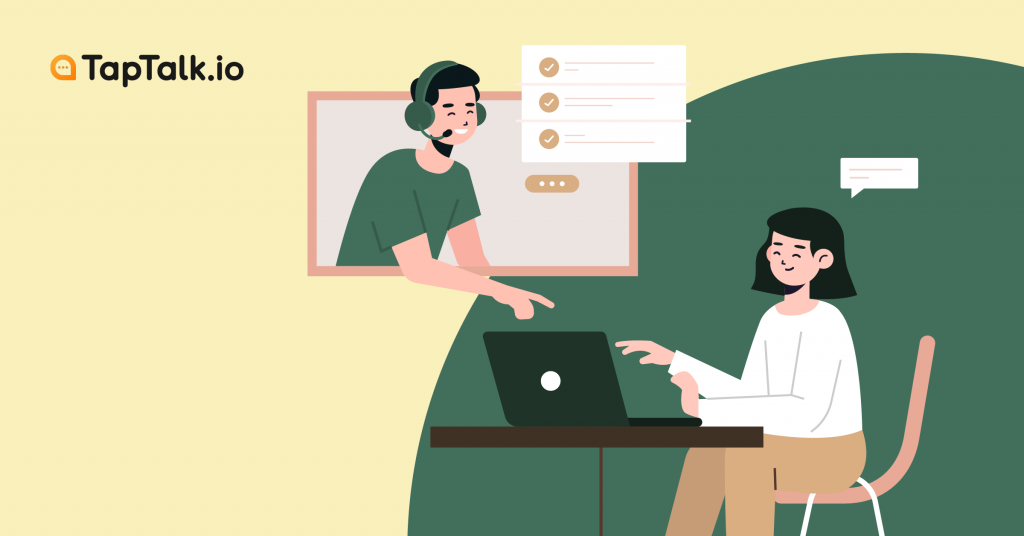
Every business that relies on websites as a customer engagement platform is always trying to find ways to increase visitors numbers on their website. There are two ways to achieve this𑁋sitting idly and just waiting and answering customer’s questions and complaints when they ask you or show your initiative before your customers reach you. While you ponder which ways are better, you should know that the second option, you can show your initiative before the customer asks for it. This explains how proactive live chat works.
You can definitely pick whatever approach you want, but reaching the customer first before any problems arise to show that you can deal with a potential problem as a result and will be more effective. The customer will get a detailed response and feels valued. So, how is proactive chat explained and how can it grow your business?
What is a proactive chat?
Proactive chat is the ability to target website visitors and then, using curated visual cues and sound effects, deliberately invite those visitors to participate in live chat interactions. In other ways, proactive chat messages are automated messages that invite your site visitors to start a conversation. This feature helps the live chat agent to take the lead, show interest, and willingness to solve customer problems as quickly as possible.
Much like an actual store salesperson, customer support experts invite visitors to talk. Taking the first steps with proactive chat software is now easier than it was years ago. Want to see some proactive chat best practices to use in your business? It's the next stop here.
Proactive chat best practices
Proactive chat is the perfect chance to show customers how much you care. It's a lot more effective to reach out to a client first and show that you can give a solution before problems arise or before complaints come.
There are several tactics that allow you to interact with customers instead of frustrating them. Now let's find out the do's and don'ts of proactive live chat, and pay attention to what you should and shouldn't do to make proactive messages work amazingly:
1. Know your time
For starters, set the message trigger to 1 minute. In general, you don't want to charge visitors all at once, give them time to look around. But how do you know which time is the right one? So, you can check the average time spent on the page using Google Analytics or other similar tools, and determine when a customer is aware of the content but will leave. Next, send a proactive chat message offering assistance.
For example, you see a customer completing an order for one minute. Run a proactive message under 1 minute, saying "Hi! Do you need help with your order? I’ll be happy to answer any questions."
2. Make your proactive conversation personal
With this type of chat, there's no point hiding behind a mask. Show your clients who you are, introduce yourself, and have friendly conversations. Try to avoid common yes / no questions and make sure your conversation is meaningful. You can also configure your messages according to the country, city, or language of the customer's current browser using a dedicated chat engine for that.
3. Keep the conversation specific and relevant
Use two different methods when someone is browsing pricing pages or technical support pages. For example, starting a sales presentation if the customer is facing some technical problem is not the best scenario. The customer is waiting for a solution, not another agreement. Since your goal is to provide service, prioritize customer needs. Choose their preference, and send a proactive message with several options in it.
For example, instead of "Do you need help?" Say "Hey! Need help choosing great leather handbags?"
4. Know your limits
Allow your customers to close chat windows or ignore conversations when they want to. Make sure that your help is adequate and that you don't annoy clients. For example, the message "Hi, I have added 1 item to your cart. Continue to the Payments section.” This message can sound too pushy. Also, don't put flashy live chat windows on every page of the site. Select a few pages instead, make the most of it there.
5. Limit the number of Proactive Messages
There is a trigger that lets you monitor how many preemptive chat invitations you have actually sent. Set it up if you don't want to bombard customers with multiple messages per page. This rule is the "number of preemptive invitations sent" and "the time since the last proactive invitation".
OneTalk offers you some features that allow you to reach customers before problems arise. One of them is Start New Conversation feature that allows you to start a case so that your business can reach your customer first. You can use this feature just by entering your destination number. Practicing Proactive Chat can also be done by another feature by OneTalk, Broadcast Message. You can reach a lot of customers all at once by sending proactive messages. You don’t even need to worry about sending messages that are too long to read, because this feature allows you to preview your messages before you hit send. Reaching your customer through broadcast messages can enhance your performance as a proactive business.
We currently offer 14 days free trial (no credit card required). Let's reach your customers using OneTalk, contact us at sales@taptalk.io, or visit our website for more info!
Reach us by phone at (021) 27939266
© 2020 - 2023 TapTalk.io (PT Tap Talk Teknologi)
